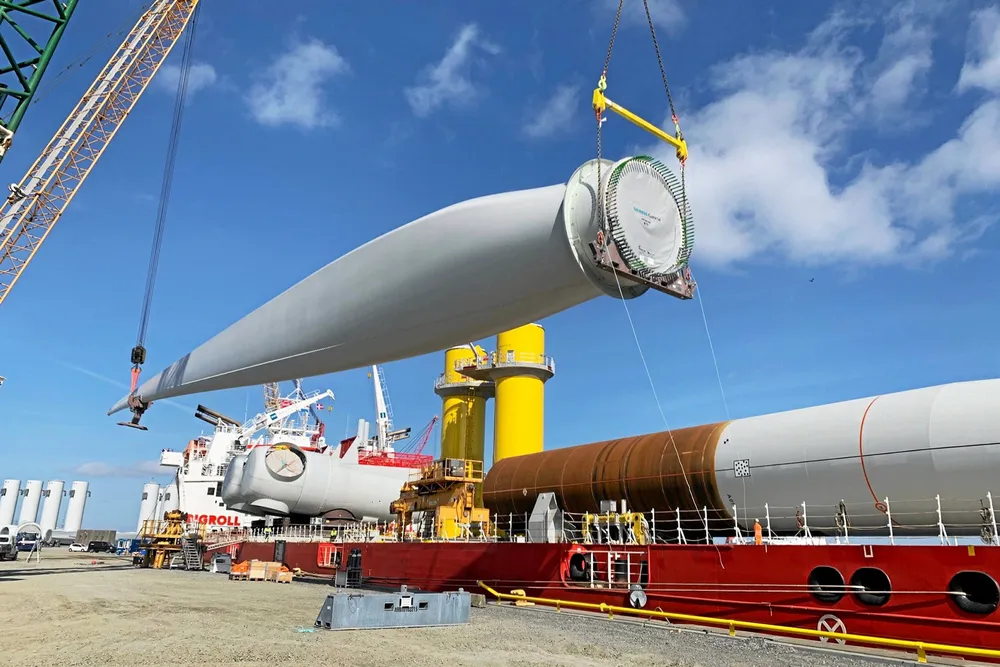US offshore wind 'down but not out' as Trump ushers in era of uncertainty: BNEF
New president’s ban on leasing in federal waters was expected but demand for review injects uncertainty into projects that are underway

Donald Trump’s ban on offshore wind leasing in federal waters came as little surprise to an industry that has long been the target of his ire.
Some 5GW of project capacity is currently in construction, including Dominion Energy’s mammoth 2.6GW Coastal Virginia Offshore Wind (CVOW) array, as well as Orsted’s 704MW Revolution and CIP-Avangrid’s long struggling 800MW Vineyard Wind 1.
Still, the remaining 13GW of capacity that was approved by the previous Biden administration but not at financial close or start of construction remains in “assessment” limbo.
Trump’s executive order directs the secretary of Interior, in consultation with the attorney general, as necessary, to "conduct a comprehensive review of the ecological, economic, and environmental necessity of terminating or amending any existing wind energy leases, identifying any legal bases for such removal”.
“It is likely that developers of under-construction projects will continue work, but the order may bring significant delays for projects yet to reach a final investment decision,” BNEF wind energy analysts Oliver Metcalfe and Derrick Flakoll wrote.
Iberdrola-controlled Avangrid, Ocean Winds (EDPR-Engie), and Equinor hold the greatest amount of federally permitted capacity, BNEF added.
Energy analytics firm Rystad likewise sees “moderate risk amid the unfavorable investment climate is present for 10.5GW of projects which secured necessary permits but have not reached investment decisions,” according to analyst Elliot Busby.
“The remaining 25GW of early-stage projects are unlikely to see any progress under the current administration,” Busby warned.
BNEF already baked Trump-related market uncertainty into its revised forecasts for medium-term offshore wind buildout, dropping it by 29% from last summer to 27.8GW.
Trump’s executive order also targeted onshore wind on federal lands but is likely to have far less impact by simple virtue that most development occurs on private property.
“If endangered species or federal waters could be affected by onshore wind, those would also require federal permits, but Republican attempts to reform permitting and weaken environmental laws could in turn reduce the restrictions on the deployment of onshore wind,” BNEF noted.
By contrast, aside from two projects in Louisiana state waters and Block Island Wind off Rhode Island, all US offshore wind development occurs in federal waters under supervision of the agencies directly controlled by the president.
BNEF has left its US onshore forecast unchanged for now.
Some insiders highlight that Trump’s order is “temporary” and hopefully short in duration, and industry groups have signalled a willingness to work with the administration towards resolving any issues and seeing rescinded.
Supply chain impact
Impacts on supply chain investment and American access to global suppliers could be great, warns Peter Lloyd-Williams, senior analyst at Westwood Global Energy.
“Even in previous forecasts, the US was only expected to account for 7% of capacity expected to reach FID [final investment decision] globally over the next decade,” he added.
Nevertheless, the wind industry has weathered the Trump storm before and remains resilient.
“The reality is, America needs to get more power into the grid in order to remain competitive in critical areas like artificial intelligence, which will require an all-of-the-above energy strategy,” said Matt Krayton, founder of Publitics, a public affairs consultancy that does work in the renewable energy space.
Offshore wind developer Ocean Winds (EDPR/Engie), which is developing three projects in the US, including SouthCoast Wind for Massachusetts, said: “We will continue to assess the scope and implications of the executive orders on our three US projects. Offshore wind farms are long term development projects, and we will keep on finding a path forward in coordination with all relevant authorities.”
(Copyright)